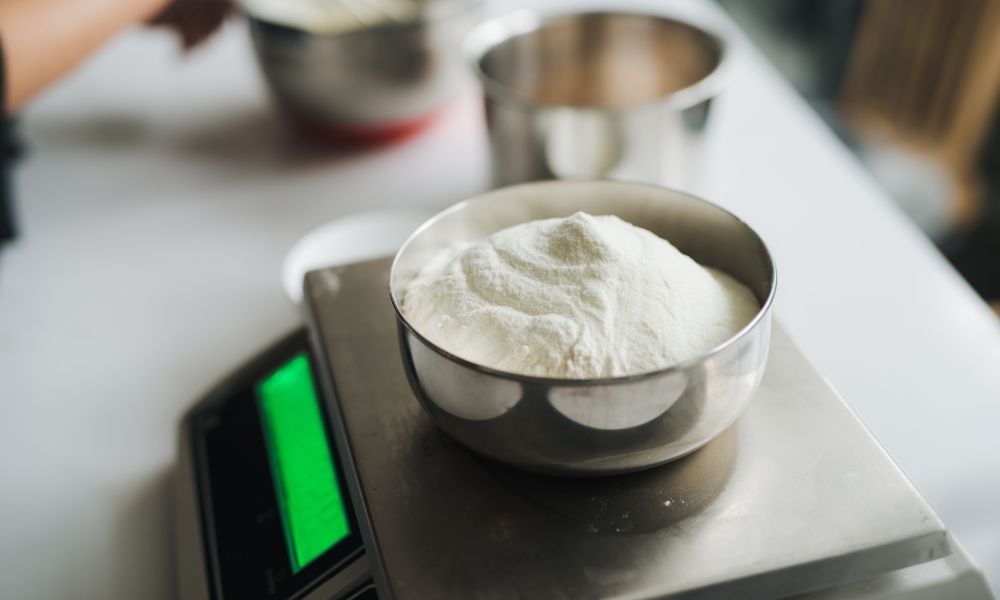In the world of industrial operations, the accuracy of measurements is essential for quality and efficiency. Bench scales, ranging from manufacturing to shipping, demand consistent calibration to ensure that each measurement adheres to stringent accuracy requirements.
Neglect or inaccuracy in this domain can lead to costly mistakes, regulatory mishaps, and a tarnished reputation through customer dissatisfaction. Understanding the importance of precision and learning how to calibrate an industrial bench scale correctly is critical to maintaining a reliable business and thriving in the competition.
Understanding Scale Calibration
Calibration is the process of configuring an instrument to provide a result for a sample within an acceptable range. The need for calibration comes from the potential for gradual drift in a scale’s measurements due to regular use and environmental factors such as temperature fluctuations, humidity, and physical disturbances.
Calibration aligns the scale’s measurements with a known standard, usually traceable to an internationally recognized reference. In many cases, the manufacturer can suggest a calibration schedule. Still, it is often the responsibility of the bench scale operator to monitor and maintain the schedule rigorously to ensure ongoing accuracy.
Precalibration Preparation
Diligent preparation is essential to ensure a successful calibration process. Begin by placing the industrial bench scale on a stable, level surface to prevent any tilts or imbalances that could skew the readings. Use a spirit level to confirm that the scale is perfectly flat.
The choice of location is also crucial; it should be away from HVAC vents, doors, windows, and heavy machinery that could cause drafts or vibrations. Environmental conditions such as temperature and humidity should be consistent. By attending to these precalibration practices, you establish the proper environment and conditions that pave the way for precise and accurate scale calibration.
Choosing the Right Weights
Choosing the correct calibration weights is fundamental to the success of the calibration process. These weights serve as the benchmark to measure the scale’s accuracy. For bench scales, it’s essential to use test weights certified by the International Organization of Legal Metrology (OIML) or the National Institute of Standards and Technology (NIST).
The total weight used for calibration should be as close to the scale’s maximum capacity as possible to ensure the calibration is effective across the entire range of the scale. It’s also necessary to ensure that the calibration weights are current and come with a valid certificate of calibration stating their exact mass and traceability.
Zeroing the Scale
Zeroing the scale is a crucial step that ensures the measurements begin from an absolute zero reference point. It’s a process to nullify any weight registered before weighing an object. Once the display settles, check that it reads “0.” If it displays any weight when the platform is empty, use the “zero” or “tare” function to reset the display back to zero.
Zero the scale every time you use it in a new location, as changes in the environment can affect its reading. Repeat this process several times to ensure that the scale consistently returns to zero when unloaded.
Applying the Calibration Weight
Carefully applying the calibration weight is an integral part of the calibration process. This includes handling the weights with gloves or tweezers to avoid transferring body oils and dirt, which might subtly alter the weight. Place the weight gently in the center of the scale’s platform to prevent any tilting or uneven distribution, which could impact the scale’s reading.
Wait a few moments for the reading to stabilize before taking a note. For scales that require multiple points of calibration, start with the minimum weight and gradually increase to the maximum calibration weight, pausing at each step to record the reading.
Recording the Readings
Recording the readings during the calibration process is a meticulous task that contributes to the successful calibration of an industrial bench scale. Once you apply the calibration weight, observe the reading that appears on the scale’s display and note it down. It is essential to be precise; record the weight exactly as it seems, including any decimal places.
Take multiple readings with the same weight to check for repeatability; consistent results increase confidence in the scale’s reliability. The data collected during this step is crucial for analyzing whether the scale’s variance falls within the acceptable range or needs further adjustments.
Making Adjustments
To adjust the scale, access its calibration mode as per the manufacturer’s instructions; this will often involve a sequence of button presses or menu navigation. Each scale has a specific method for adjustment; quality industrial bench scales will adjust automatically after applying the weights, while others require manual input of the expected weight values.
Gradually add the calibration weights and adjust the readings to match the weights’ known values precisely. Be thorough in this process, checking that the scale reads accurately at lower weights, intermediate weights, and maximum capacity.
Repeat Measurements
After adjusting the calibration, it’s necessary to repeatedly test the scale’s accuracy to confirm the adjustments are successful. This involves removing the calibration weights, allowing the scale to return to zero, and then reapplying the weights several times. Record the obtained measurements after each application.
These repeat measurements are crucial in evaluating both the precision and repeatability of the scale. A reliable scale should show negligible variation between repeated measurements of the same weight. It is also recommended to conduct these repeat measurements with different weights to verify that the scale is consistent across its entire range, not just at a specific weight point.
Postcalibration Checks
Postcalibration checks are necessary to verify that the scale is performing accurately across its full measuring range following calibration. These checks involve testing the scale with various weights that span the scale’s capacity, from the lightest to the heaviest limits.
Begin with the smallest weight increment and gradually add more weight, taking note of the readings at each step. Compare these readings with the known weight values to confirm there are no discrepancies. Any inconsistencies here might indicate a need for recalibration.
Maintaining Your Scale
Regular maintenance is critical to extend the life and accuracy of your scale. House it in a stable environment with minimal exposure to extreme temperatures, humidity, and vibrations, all of which could affect its accuracy. Keep the scale clean, wiping it down regularly with a damp cloth to prevent the accumulation of dust and debris that can impact the weighing sensors.
Keeping a regular calibration schedule and adhering to the manufacturer’s service recommendations will help to catch any potential issues early. By following these practices, you not only ensure the reliability of your scale but also comply with any regulatory standards pertinent to your industry.
A calibrated scale to expected standards is a reflection of your commitment to precision. By fostering this dedication to accuracy through every measurement taken, you help uphold the highest standards in your field, contributing to the superior quality of products and services within the marketplace.
Working with professionals in the field will help you keep your equipment up-to-date and functional. Call us today to learn more about our services and explore our catalog of industrial bench scales.

